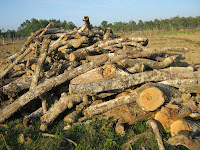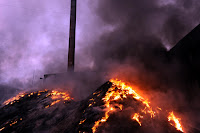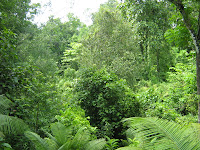 |
| Invasive species |
For long times, economic valuable plants have been
introducing in Bangladesh. Plant's migration or introduction from one place to
another sometimes may be natural or planned. Many other countries, including
Bangladesh have been introducing plants from different countries or geographic
areas of the world. Settlers, invaders, seamen and traders have been brought
most of the plants, having no detailed records of these exotic plants. Many of
them are of economic benefit. However, a good number of exotic plants is weedy
in nature. Most of them were introduced as ornamental plants before becoming
established elsewhere. Some of them are so well established that they are now
the dominant plant and became noxious weeds of forests and wastelands (Eupatorium
odoratum, Mikenia cordata, Croton spp. etc.). Some are also
considered noxious weeds of cultivated fields (Alternanthera, Scoparia and
Heliotropium spp.). Others are found in water land (Eichhornia,
Eleocharis and Monocharia spp.).
In the 19th century, the British was
mostly contributed to the introduction of some economically important forest
plants from almost all the continents. The introduced species are Tectona grandis,
Albizia spp., Samanea saman, Xylia kerrii, and Swietenia
macrophylla. In the 20th century, this trend continued to be the same and
some Australian species (Eucalyptus camaldulensis, Acacia mangium, Acacia
auriculiformis) are getting preferences in the plantation programmes in
Bangladesh. Leucaena leucocephala (Tropical America) are also found all
over the country and pines (Pinus oocarpa and P. caribaea) are also
planting in the hilly areas. Of these, the Acacia auriculiformis is
dominating in all the plantation programmes and growing well in all sorts of
degraded land. Recently, the controversy arose out of that pollen of
the species is allergic to many people. Very recently, the cultivars and
hybrids of different crops and ornamental plants have been also introduced
haphazardly. Some weedy species dominate crop fields, forests, wasteland and
marginal lands. Some of the species have luxuriant growth and suppressed the
growth of other native species. This results in a loss of native floral
diversity across the country.
The danger posed to natural habitats by
these alien invasive plants is becoming a major concern among conservationists,
ecologists, foresters, policy makers and scientists. To overcome such problems
caused by the invasive plant species to the natural ecosystem, the possible
suggestions such as to raise awareness among the planters, growers and public; to
develop a database on invasive species; to quantify the abundance of the invasive
species; to develop environmentally sound eradication methods; and to introduce
the necessary quarantine, legislation and regulations on the spread of the
invasive plants.









